SUMMARY
This is AI generated summarization, which may have errors. For context, always refer to the full article.
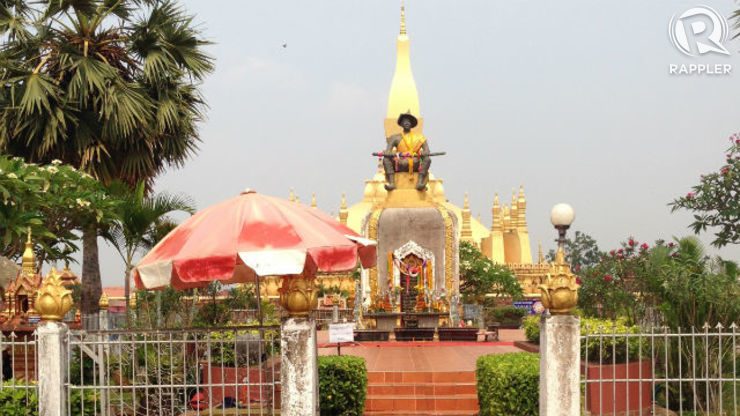
VIENTIANE, Laos – Of all the countries in Southeast Asia, Laos – formally known as the Lao People’s Democratic Republic – is, perhaps, the least known or popular. Unlike many of its neighbors, tourism is not overly commercialized. Nor is it considered a ‘must-visit country’ in the region by most tourists. This landlocked country is a mystery to most people, even Southeast Asians.
Before my planned family trip to Bangkok, I decided take a short journey to Laos and experience what it’s like in what most people describe as the “forgotten” country. My mission was to find out what the fuss (or the lack thereof) was all about.
From Bangkok to Vientiane
There are no direct flights from Manila to Vientiane. Hence, I had to travel by land to get to the country. When I arrived in Bangkok, I initially wanted to take a train to Vientiane since it was cheaper (only 450 Baht or $14) and it took less time to get there. I forgot to take into consideration that I arrived a week before Songkran or the Thai/Lao traditional new year, and that all the Laotians in Thailand were all heading home during this time.
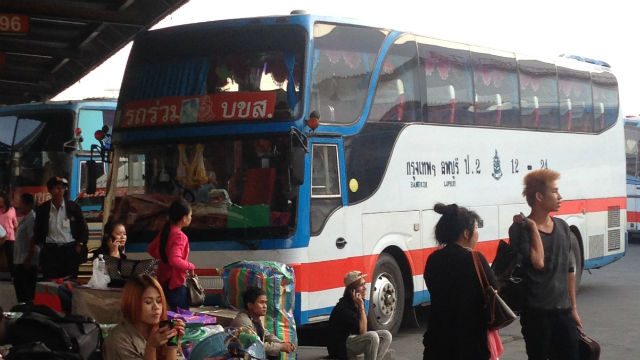
Upon arriving at the Hualampong Central train station in Bangkok, I found out that there were no more seats for the sleeper train to Vientiane that night. I felt a bit of panic. It was a good thing that I was with my Thai friend, Pakawat Chusut (whom I met in Taipei). He suggested that I take the sleeper buses leaving for Vientiane in Mo Chit (Bangkok’s northern Thailand bus station). I told him anything is good as long as I get to Vientiane, as some of my Laotian friends were also waiting for me there.
I got one of the last seats for the sleeper bus when we arrived at Mo Chit. The ticket cost twice as much as that of the train. The terminal was really busy – passengers were sitting on the floor as there weren’t any seats left in the waiting areas. Everyone wanted to go to their provinces to spend the week-long holiday with their families.
After enduring the humid and packed Bangkok terminal for 7 hours, it was finally time to board the bus. The reclining seats in the bus looked more comfortable compared to the photos of the trains I saw online. It was a good thing I missed the train, I thought to myself. The bus was full with Laotians and backpackers but everyone was too tired to chat. Almost all the passengers fell asleep as soon as we left the terminal at 8pm.
We arrived at the Thai town of Nong Khai a full 13 hours later.
‘Friendship has no boundaries’
Tourists heading to Vientiane from Bangkok have to cross the Thai-Laos friendship bridge at Nong Khai – Thanaleng border. Passengers will first disembark at the Thai immigration at Nong Khai to have their documents checked before they will again board their buses that will take them to Lao immigration.
I found out that it’s actually more convenient to take a bus if you’re going from Bangkok to Vientiane. Those taking the train will need to take a tuktuk or bus from the Nong Khai train station to the Thai border. After getting their exit stamps, they will have to take another tuktuk or wait for the service bus to get to the Lao side, which is a few kilometres away. (This border is not walkable like that of the Vietnam-Cambodia border in Poipet!)
After crossing the Mekong river, you will arrive at the Lao side in Thanaleng. You will need to pay an immigration tax of 1,000 Lao kip (a mere 5 baht!). They will then give you a card which you will have to swipe at an entryway after passing through the immigration officer.
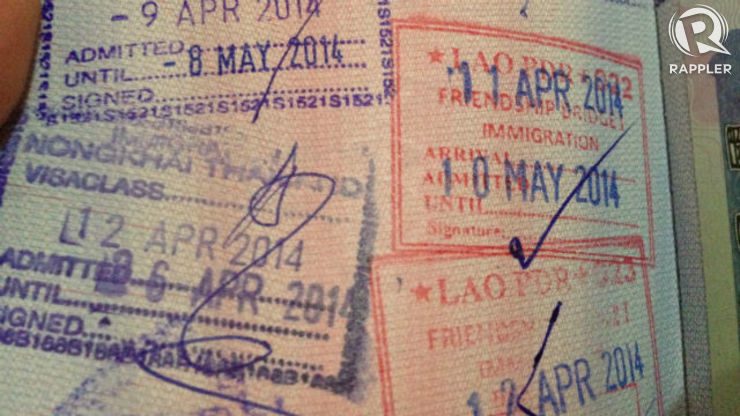
The immigration is hassle-free for ASEAN nationals. Some of the immigration officers won’t even look at you and just stamp your passport right away! It’s a different story though for Western passport holders. Most tourists need to get a visa on arrival before they are allowed entry to Laos. Our bus actually got delayed for an hour or so in the Lao border because the European passengers had a difficult time with immigration.
After clearing the immigration, the sleeper bus will take you to Vientiane’s city center. You are now in Laos! (For those travelling by train, they will have to take a tuktuk or another bus ride to get to Vientiane. This is why I suggest you take a sleeper bus. It’s less hassle!)
Places to visit
Unlike most capital cities in the region, you don’t need to take buses or trains to get to the tourist spots in Vientiane (locally pronounced as Vieng Chan). The city, in fact, doesn’t have trains around the city and the bus routes are difficult to master since most drivers don’t speak English.
If you have the energy for it and like sweating, like myself, you can walk around or rent a bicycle for a day (this costs less than $2). If you know how to ride a motorbike, you can rent one in any guesthouse and you don’t even need a license for it (as long as you don’t get caught by the police, my Laotian friend said). You can also rent a tuktuk for a day. This is good for solo travellers. Aside from having a local tour guide, you also have someone to take pictures of you.
Here are the places I suggest visit when venturing in Vientiane:
Pha That Luang

This is definitely a must-visit in Laos. Pha That Luang is the country’s national symbol and a source of Lao nationalism. This gold-covered Buddhist stupa was built in the 3rd century at the height of the Khmer empire. Originally built as a Hindu temple, this place had survived many battles and had actually been sacked by Burmese, Siamese and Chinese invaders a couple of times.
You’ll see various Buddhist artefacts inside the temple. Remember that this is a place of reverence for Laotians so proper decorum and attire are expected of tourists. Entrance fee is a mere 5,000 kip (20 baht or $0.7).
Around the temple premises, you’ll see other excellently built buildings. You can sit in one of the benches and enjoy a fresh lemonade. I found myself contemplating the temple’s history and how it has withstood the test of time. Like the temple, the Laotians have had to rebuild from practically nothing.
Patuxai

Have you been to the Arc de Triomphe in Paris? Well, Vientiane has something like it. It’s called Patuxai. This war monument was actually built to remember the Laotians who fought the independence war against France (ironic, isn’t it?). When the communists (Phatet Lao) took down the ancient monarchy of Laos, they renamed the arc to celebrate their victory.
Patuxai has 7 floors and you can go up the monument for 5,000 kip. There are many souvenir shops in the 6th and 7th floor. On top of the monument, you can see a breathtaking view of the small city. The monument is still not finished up to this day but is already very elegant as is.
Chao Anouvong Park
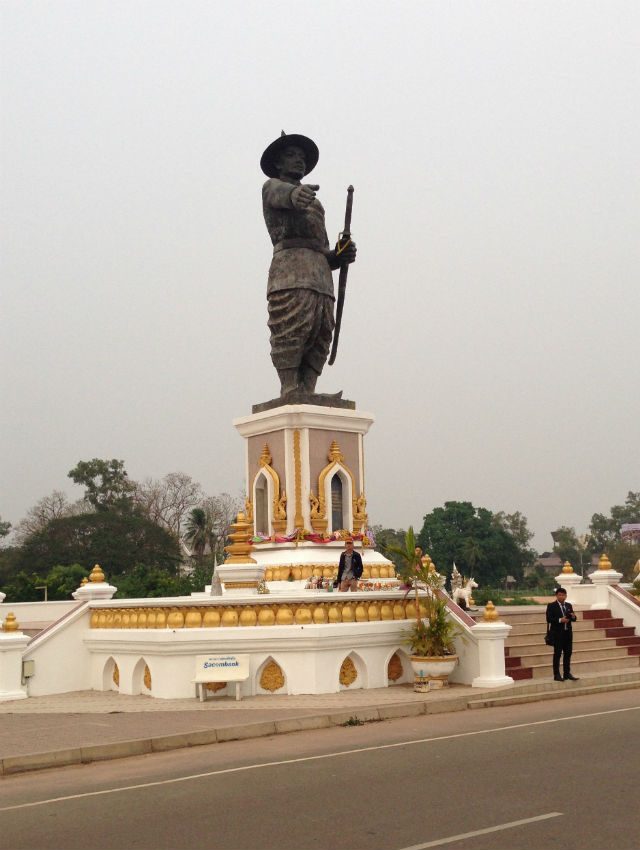
Tired of touring around the city? Why not grab a Beer Lao (10,000 kip, $1) and head to Chao Anouvong Park to see the sunset?
Chao Anouvong is found right beside the Mekong river. It is frequented by tourists and locals alike to relax and unwind. You can sit by the banks and reflect on the calm river quietly flowing or bike around the street with locals.
The park was built in honor of the last monarch of the Kingdom of Laos. A full bronze statue is actually seen at the end of the park. Laotians pay respect to the statue by laying lotus flowers and lighting candles. (You can buy lotus flowers from vendors in the park. The pleasant sweet smell is very much worth your dollar.)
After sunset, the park becomes the city’s shopping district. The night market is a good place to look for souvenirs, from t-shirts to Lao linen to paintings! Like many night markets in Southeast Asia, haggling is allowed here. You should start dealing at half the price. Vendors will also tend to lower the costs if you buy more than one item.
Wat Sisaket
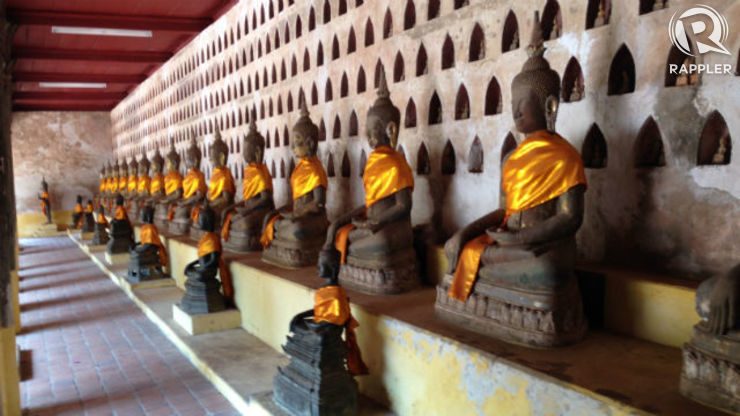
I just couldn’t get enough of the temples (and the smell of incense in the air)!
Wat Sisaket is one of the oldest standing Buddhist temples in Vientiane and hence, is a national symbol of the country’s religion. The temple was built in Siamese style on the orders of Lao King Anouvong in 1818.
There are many Buddhist artefacts to see inside. Around the temple, you’ll see Buddhist grave markers. I actually had the honor of seeing people paying respects to their departed loved ones while I was on my way out of the temple. Like the other two landmarks, the entrance fee here is 5,000 kip.
Ho Phra Kaew
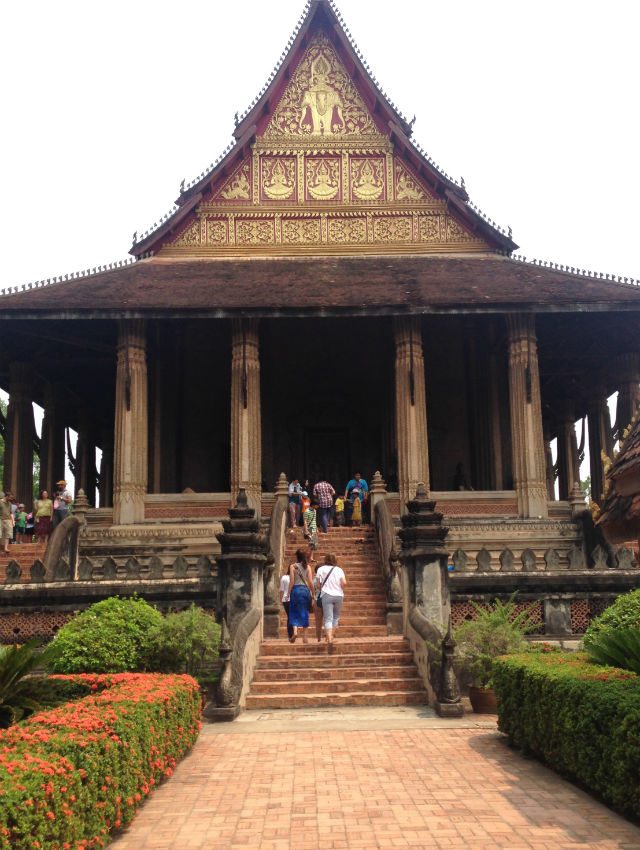
Just in front of Wat Sisaket is Ho Phra Kaew. This temple-turned-museum is important to both Laotians and Thais as it once housed the Emerald Buddha, Thailand’s palladium and most important Buddha image.
The former temple was built between 1556-1565. When Vientiane was invaded by the Siamese, the Emerald Buddha (which is actually made of jade, not emerald) was transferred to its current home, the Wat Phra Kaew in Bangkok’s Grand Palace.
The entrance fee here is slightly higher than the other tourist spots. It costs around 8,000 kip (32 baht or $1).
Other places of interest
There are other interesting places that you can visit in Vientiane. Beside Ho Phra Kaew is the Presidential Palace. It’s good for taking photos but I don’t think visitors are allowed to enter the area. For those interested in buying gold, visit the Talat Sao Mall, the only mall in the capital, for some Lao gold at relatively cheaper prices.
I regret that I didn’t get to visit the COPE Centre, a well-known local non-governmental organisation that gives prosthetic and rehabilitation services to disabled Laotians, mostly those who had been victims by the bombs dropped in the country during the Vietnam War.
Also near the city is the Buddha Park (Xieng Khuan) which houses many religious images. You can go here by tour or by renting a tuktuk.
Problems with accommodation?
Guesthouses and hostels are increasing in Vientiane due to the growing number of tourists visiting the country. If you have the right budget, you can stay in one of the 3 or 4 star hotels in the city. If you don’t, I suggest booking a room in one of the guesthouses also found in the city center.
The guesthouses and hostels are mostly safe. They have air-conditioned rooms and wifi hotspots. For solo travellers, sharing a dorm room can be as low as 60,000 kip ($8) a night. I personally don’t like sharing a room with strangers so I booked a solo room with air-condition and wifi at 160,000 kip ($20).
Laotians are friendly and accommodating. You can book train, bus, and airplane tickets from guesthouses and hostels. They also offer tours to other Lao cities and provinces.
The Laotian way of life
During my 2-day getaway in Vientiane, I finally understood the mystery of Laos. The capital, like most of the country, is very laid back and chill. Laotians like to relax and it’s their custom to occasionally take a break after a hard day’s work (i.e. biking in Chao Anouvong). If you’re the type who likes to chill and not do many activities during vacation, then Laos is definitely for you!
This sleepy country, however, is starting to wake up. Tourism is starting to gain momentum and businesses are sprouting everywhere. Even with the country’s low economic pace, I won’t be surprised if Laos will become the new Asian tiger in the next decade. The Laotians are learning to adapt to the challenges of globalization and they are learning fast.
My advice: Go to Laos while it’s still laid back and its culture still untarnished by commercialized tourism. Once more tourists start visiting, the country will not be the same. If I had the time, I’d definitely visit the other Lao cities like Luang Prabang and Pakse. I heard the 4,000 islands near the latter is a sight to marvel at. – Rappler.com
David Lozada is a multimedia reporter for Rappler’s MovePH.
Add a comment
How does this make you feel?
There are no comments yet. Add your comment to start the conversation.